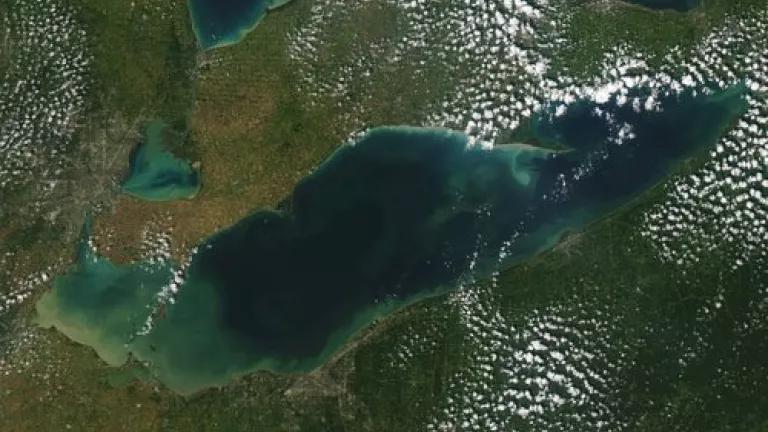Ohio: Bringing Up the Rear on Climate Change Action in the Great Lakes - and Across the Country

Chances are, if you live in the Great Lakes Basin, you’re already experiencing the impacts of climate change from warmer temperatures (in both winter and summer), earlier snowmelt and reduced ice cover on lakes. But, if you’re like me, what you’ve really noticed is the change in precipitation patterns. Across the region, we’re getting more rain in short, concentrated bursts. In fact, these heavy rainfall events are twice as frequent as they were a century ago. Over the next several decades, Cincinnati could experience 30 percent more frequent heavy rain events and a twofold increase by the end of the century. Across Ohio, winter and spring precipitation are projected to increase 30 percent by the end of the century.
More rainfall and heavier downpours spell trouble for Ohio. Communities and agricultural areas in floodplain areas could be at greater risk from flooding, and water quality and public health could be in jeopardy as wastewater treatment systems are overwhelmed by heavy rainfall, resulting in the release of raw, untreated sewage. Harmful algal blooms will continue to thrive as climate change leads to warmer water temperatures and more nutrient runoff. These algal blooms on Lake Erie can even be seen from space:
In contrast, summers are expected to become drier as precipitation declines by 5 percent and hotter temperatures drive increased rates of evapotranspiration. River, stream, and lake levels are expected to decrease during summer months because of higher temperatures, further contributing to drought conditions.
Lake Erie, by some accounts, already on the brink of collapse, will be further impacted by climate change. Its water levels are projected to decline by less than 1 foot to almost 1.5 feet due to greater evaporation during the summer and reduced ice cover in the winter. Lower water levels would impair commercial shipping in the Great Lakes by reducing the cargo load capacity of ships and also could impact tourism and recreation by limiting access to boat ramps and ferry landings, among numerous other effects.
Despite these grave risks facing the state, Ohio has yet to act to reduce greenhouse gas pollution or prepare for climate change impacts. According to a new NRDC report, which examines all 50 states on their climate preparedness planning, this lack of action puts Ohio among the least prepared states in the nation. In fact, it’s one of six states with virtually no climate change planning at all. Of the eight Great Lakes states, Ohio and Indiana are bringing up the rear while Wisconsin, New York, and others are leading the charge.
Climate change leaves no state untouched. Ohioans should demand that local and state officials take climate change risks seriously and start preparing for the coming impacts. There are many opportunities for the state to use green infrastructure to manage stormwater, reduce flooding risks, and improve water quality. The Northeast Ohio Regional Sewerage District (NEORSD) is implementing a consent decree with EPA to use green infrastructure to help control stormwater and reduce sewage overflows into Lake Erie. Cincinnati is considering a range of green infrastructure projects to address stormwater as well. Water conservation and efficiency measures also would help Ohio meet its obligations under the Great Lakes Compact, which I’ve written about previously, in addition to better preparing communities for a changing climate.
Ohioans can do better by assessing the challenges presented by climate change, planning, preparing and acting. It’s not too late to start, but the clock is ticking.

